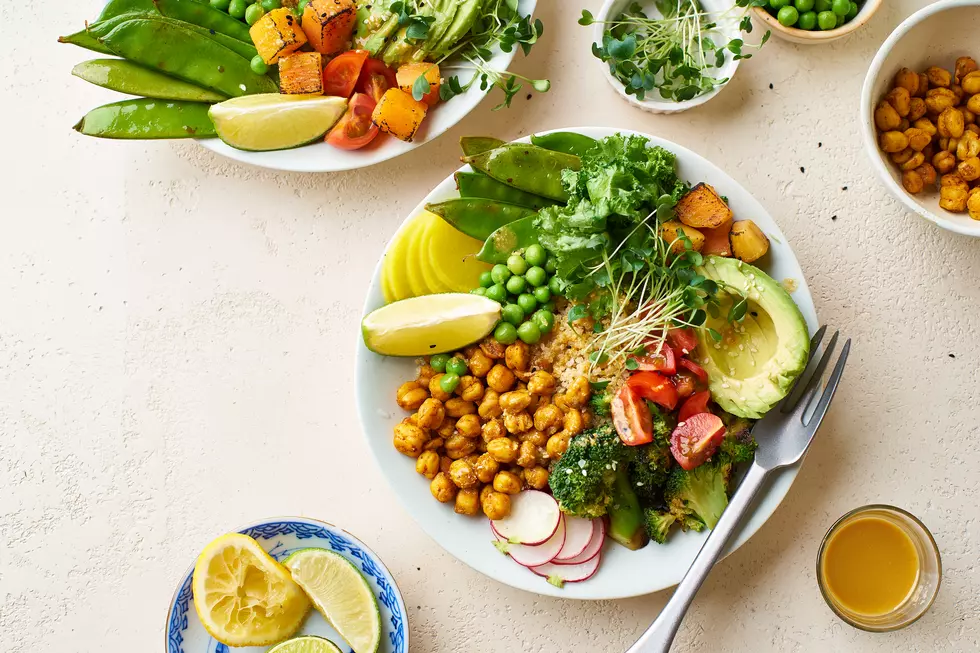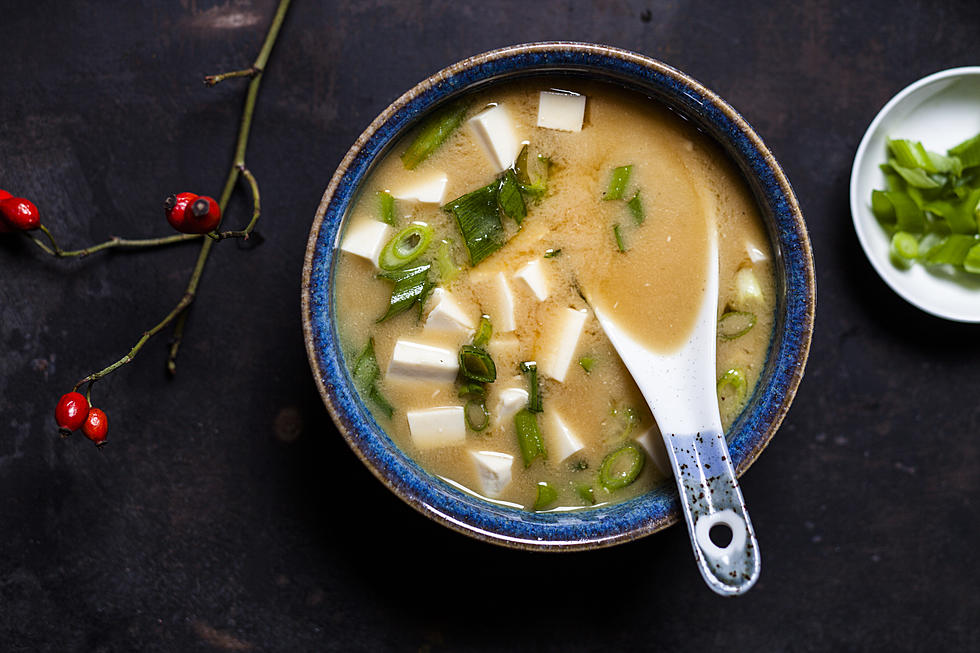
Which Plant-Based Pasta Is the Healthiest? Experts Weigh In
Pasta is loved by everyone – and yet pasta-lovers worry about the carbs. It’s a staple in many households because of its versatility (73 percent of Americans report eating pasta at least once a week in a recent survey). Hot, cold, side or entrée, red or green sauce, such as this Vegan Pesto Pasta, there are more ways to enjoy pasta than any other food.
But the truth is that white pasta lacks nutrition (unless you're carbo-loading for a race). According to the USDA, pasta is high in refined carbs, low in nutrients, and made from durum flour and eggs. However, there’s good news for pasta lovers who want to get a little creative. There are plant-based alternatives that are high in protein, low in fat, and egg-free. They’re made from various plant sources, such as whole wheat, lentils, brown rice, black beans, chickpeas, and more.
But is the hype around the healthiness of plant-based pasta warranted? With so many options, which is the healthiest? Fortunately, registered dietitians are here to help answer: which pasta is healthiest? Depends on what you're looking for.
Is plant-based pasta healthy?
Well, it depends. The question to ask is: healthy compared to what? Plant-based pasta contains more fiber, protein, vitamins, and minerals than conventional pasta, but they’re not as healthy as eating the whole food version. The reason is the flours that make pasta are inherently more processed than the natural, whole-food version (meaning they’re stripped of nutritional value).
Brittany Lubeck, MS, RD, a registered dietitian and nutrition writer, tells The Beet, “Although this pasta is made from plants (and we’re always told to eat more plants), it shouldn’t take the place of whole vegetables in your diet.”
The nutritional content of pasta pales in comparison to actual vegetables. It would take several servings of plant-based pasta to equate to a single vegetable serving. Not even the hungriest of plant-based strongmen can stomach that much pasta. Instead, try adding veggies to pasta dishes to boost their nutritional value.
Plant-based pasta is still a nutritious food to enjoy in moderation. Be sure to buy organic when possible and read the ingredients list. Many pasta products contain only a single ingredient, like red lentil flour or chickpea flour, making them healthier than traditional wheat or durum flour pasta which contain unwanted fillers and additives.
Additionally, a study published in Frontiers In Nutrition in August 2020 found pasta consumption was associated with significantly better diet quality, higher daily intake of critical nutrients, and lower daily intake of saturated fats and added sugars.
High protein pasta
A huge draw of plant-based pasta is it’s high in protein and complex carbohydrates. The types that pack the most protein are quinoa, chickpea, red lentil, black bean, pea, and edamame. Dietitian Lubeck explains that when you make pasta using protein-rich plant flours, you get even more protein than the whole food version because you’re consuming protein in a more concentrated form.
Even conventional pasta contains 6 grams of protein per 100-gram serving, nothing compared to plant-based options like a black bean with 22 grams of protein (plus 15 grams of fiber) or red lentil at 21 grams of protein and 19 grams of fiber per serving.
Reda Elmardi, RD, CPT, a registered dietitian, personal trainer, and owner of The Gym Goat, recommends quinoa pasta as his go-to pasta for protein content. “Quinoa is a gluten-free grain that’s loaded with protein. It’s considered a complete protein due to its full amino acid profile. It’s also a good source of many nutrients, such as iron, magnesium, zinc, and selenium.” Quinoa pasta is also an excellent choice for vegans and vegetarians since it contains all nine essential amino acids.
Which kind of pasta is best for you?
Like anything else related to health and nutrition, there’s no single best food, product, or solution. So the “best” pasta for you may be different than someone else's — it depends on what you’re looking to glean from it.
“Many plant-based pasta products have similar nutrition profiles for calories, sodium, and carbohydrates. One serving of plant-based pasta typically provides 180 to 230 calories, less than 100 milligrams of sodium, and 30 to 50 grams of carbohydrates,” says Lubeck. “Plant-based pasta is also low in fat and typically doesn’t exceed 3 to 4 grams per serving. If you’re looking for a plant-based pasta with zero fat, then you may want to try one made from cassava or sweet potatoes.”
While most types of plant-based pasta are similar in terms of calories and overall nutrition, they can vary significantly in protein and fiber content. If your goal is to add more of these essential nutrients to your diet, Lubeck recommends opting for lentil, chickpea, or black bean pasta. Since protein and fiber are highly satiating, you’ll feel fuller longer and be less likely to overeat.
Besides quinoa, Dietitian Elmardi recommends brown rice pasta as a great option if you’re looking for pasta with high overall nutritional value. He says, “Brown rice pasta is packed full of vitamins and minerals like magnesium, zinc, iron, copper, manganese, and selenium. These trace elements help keep your body healthy and strong.” Brown rice pasta also packs a good amount of protein, as you’ll see below.
To help guide you on your next grocery haul, here are nutritional breakdowns of popular plant-based pasta products ranked in order of protein content from highest to lowest.
Looking for a healthy snack? Try these Crispy Vegan Pasta Chips.
Note: The nutrition information provided is based on 100-gram servings and gathered from the USDA.
Types of High Protein Pasta
Edamame (and Spirulina) pasta
- Protein: 43 grams
- Fat: 7 grams
- Carbs: 36 grams
- Fiber: 25 grams
- Energy: 339 calories
Black bean pasta
- Protein: 22 grams
- Fat: 1.5 grams
- Carbs: 49 grams
- Fiber: 15 grams
- Energy: 331 calories
Red Lentil pasta
- Protein: 21 grams
- Fat: 3 grams
- Carbs: 60 grams
- Fiber: 19 grams
- Energy: 331 calories
Chickpea pasta
- Protein: 21 grams
- Fat: 6 grams
- Carbs: 61 grams
- Fiber: 14 grams
- Energy: 375 calories
Pea pasta
- Protein: 21 grams
- Fat: 2 grams
- Carbs: 56 grams
- Fiber: 8 grams
- Energy: 353 calories
Spinach pasta
- Protein: 12.5 grams
- Fat: 3 grams
- Carbs: 73 grams
- Fiber: 11 grams
- Energy: 366 calories
Whole wheat pasta
- Protein: 11 grams
- Fat: 2 grams
- Carbs: 79 grams
- Fiber: 6 grams
- Energy: 339 calories
Brown rice pasta
- Protein: 7 grams
- Fat: 5 grams
- Carbs: 73 grams
- Fiber: 7 grams
- Energy: 339 calories
Quinoa pasta
- Protein: 7 grams
- Fat: 1 gram
- Carbs: 80 grams
- Fiber: 2 grams
- Energy: 357 calories
Conventional pasta
- Protein: 6 grams
- Fat: 1 gram
- Carbs: 31grams
- Fiber: 2 grams
- Energy: 158 calories
Cassava flour pasta
- Protein: 2 grams
- Fat: 0 grams
- Carbs: 86 grams
- Fiber: 7 grams
- Energy: 351 calories
Bottom Line: For protein-filled nutritious pasta, choose plant-based pasta
Whole plant-based pasta can be an incredible source of protein, fiber, complex carbohydrates, and other essential nutrients. Be a savvy shopper and read ingredient lists before buying your pasta and choose organic when possible.
For more great stories about how to eat healthier and follow a plant-based diet, see The Beet's Health & Nutrition articles.
More From The Beet









